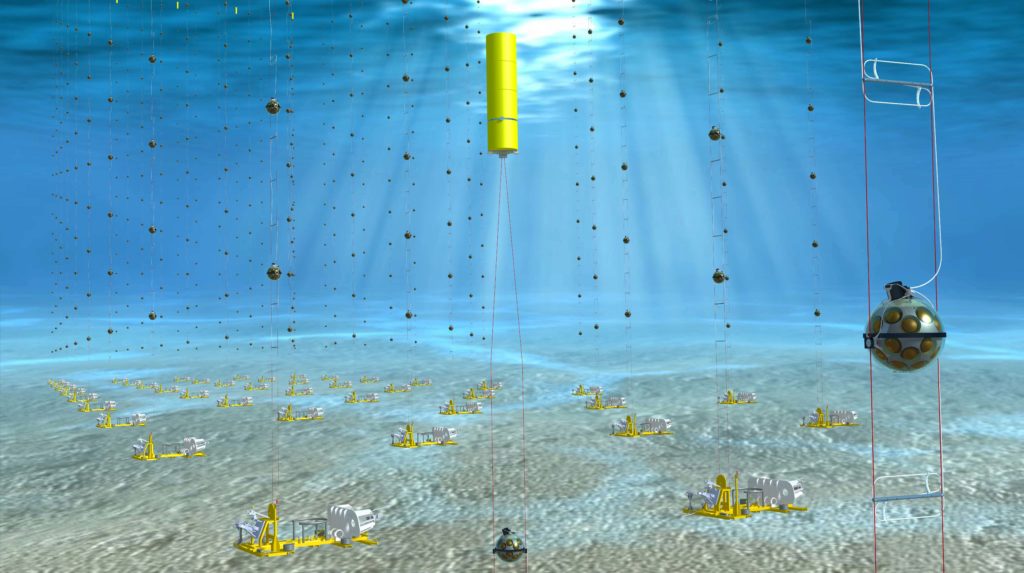PageContent
KM3NeT

KM3NeT is a research infrasctructure that will host the next generation neutrino telescopes in different abissal sites in the Mediterranean Sea. Once completed, the telescopes will have a total volume of several cubic kilometres. Their location in the Northern hemisphere and the optical properties of sea water will allow to achieve an unprecedented sensitivity to high-energy neutrino cosmic, coming from the Galaxy or extra-Galactic. Multi messenger exploration of the Universe will be especially pursued, in strict cooperation with other observatories in the field of X, gamma, radio emissions, gravitational waves, UHE cosmic rays. From the analysis of the atmospheric neutrino oscillations a contribution is also expected in the study of the neutrino properties.
At about 100 km off-shore of Capo Passero, extreme southeastern point of Sicily, at the deep-sea installation site KM3NeT-It, the KM3NeT/ARCA (Astroparticle Research with Cosmics in the Abyss) telescope is under costruction. It will be anchored at the sea bottom at a depth of about 3500 m. Its total size will be larger than IceCube’s, the neutrino telescope buried under Antarctic ice. It will be mainly devoted to the search of high-energy cosmic neutrinos and to the identification of their sources.
Off the coast of Southern France, about 40 km far from Toulon, at the installation site KM3NeT-Fr, the KM3NeT/ORCA (Oscillation Research with Cosmics in the Abyss) neutrino telescope is being built at a depth of about 2500 m. Its primary scientific objective is the measurement of atmospheric neutrino oscillations in order to determine the neutrino mass hierarchy. Its design also makes it sensitive to the detection of neutrinos produced during supernovae explosions in our Galaxy
Both ARCA and ORCA will bring thousands optical sensors to detect Cherenkov photons due to the charged particles produced in neutrino interactions.
Not only is KM3NeT a huge network of neutrino telescopes, but it also is an Earth and sea science infrastructure, suitable to monitoring of deep sea environment and to observations in several fields of research, like sismology, geophysics, biology and climate studies.
The KM3NeT Research Infrastructure is present on the European roadmaps for large infrastructures of APPEC and AstroNet . KM3NeT is in the list of Recognized Experiments at CERN.
KM3NeT in Bologna – activity
The group of Bologna includes researchers, engineers and technicians from INFN and CNAF, and researchers and students of the Bologna University, active on several, different tasks.
+ Show KM3NeT in Bologna – people + Show
Local team leader – Annarita Margiotta annarita.margiotta[at]unibo.it DAQ Coordinator – Tommaso Chiarusi tommaso.chiarusi[at]bo.infn.it Bologna team members: Paolo Castaldi paolo.castaldi[at]unibo.it Francesco Filippini francesco.filippini9[at]studio.unibo.it Giuseppe Levi giuseppe.levi[at]unibo.it Carmelo Pellegrino carmelo.pellegrino[]bo.infn.it Maurizio Spurio maurizio.spurio[at]unibo.it Federico Versari federico.versari[]unibo.it
Servizio Tecnico GeneraleLocal Quality Supervisor – Claudia Valieri claudia.valieri[at]bo.infn.it Servizio di elettronica Giuliano Pellegrini giuliano.pellegrini[at]bo.infn.it












